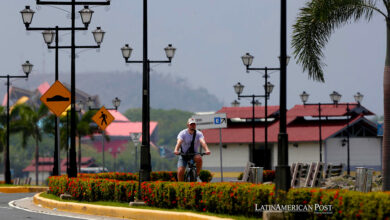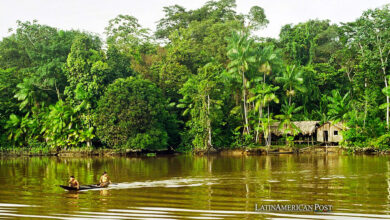Water Conference 2023: Balance of Achievements and Pending Challenges
The 2023 Water Conference concluded Friday with nearly 700 commitments to protect this vital source of life.

Photo: Unsplash
LatinAmerican Post | María Fernanda Ramírez Ramos
Escucha este artículo
Leer en español: Conferencia del Agua 2023: balance de logros y desafíos pendientes
The 2023 Water Conference was held from March 22 to 24 and was chaired by the United Nations Organization (UN) in New York and the United Nations Environment Program (UNEP). The meeting aimed to seek innovative solutions and strengthen international cooperation to deal with the growing pressure on hydrological resources. The attendance was made up of government representatives, civil society, scientists, representatives of the private sector and indigenous communities.
The water emergency
After 47 years of the first Water Conference in 1977, the event was held again with a clear focus: the emergency that exists regarding the crisis of water resources. During the first day of the meeting, the UN published, as a prelude, a report warning about the challenges that humanity could face in the coming decades due to the water crisis, which in turn is a consequence of the climate crisis.
Also read:Melting Permafrost: An Invisible Threat of Climate Change
According to the report, today there are more than 2 billion people (26% of the world population) who live without drinking water and 3.6 billion (46%) who do not have access to safely managed sanitation, despite the fact that these are services that have been recognized as human rights for a long time. The UN Secretary General, António Guterres, emphasized that this problem will affect everyone without discriminating economic classes.
Likewise, the report indicates that these water crises will be accompanied by extreme natural phenomena that depend on the geographical location. In some places there will be extreme droughts and in others, massive floods. It also ensures that, if immediate and extreme measures are not taken for the conservation of water resources and for the prevention of natural disasters, by 2050 60% of the world population may be facing concerns of access to water supplies.
Conference achievements
During the conference, the support of the Action Agenda for Water was announced, which will also have financing of 300 billion dollars, and it is expected that the implementation of this will unlock at least one billion dollars in socioeconomic benefits and ecosystem. In addition, the conference resulted in almost 700 non-binding commitments. Some of the most important are:
-
The creation of an international financing fund for the conservation of water resources.
-
The creation of the Water Academy, which seeks to train experts in water issues for conservation purposes.
-
Access to an open data system so that governments have sufficient and accurate information and can make more informed decisions.
-
Create spaces to discuss the valuation of water.
-
Have a representative at the UN to follow up on these commitments.
The challenges ahead
As we already mentioned, these commitments are non-binding, which means that there is no signed document in which governments and the parties involved are legally bound to comply with them. Although it is hoped that they can become binding in the next meetings in which the conference is brought up, for now everything remains in words.
This is a great challenge, considering the historical and low level of commitment of governments with the measures that face the environmental crisis. Let us remember that despite the existence of documents such as the Paris Agreement or the Escazú Agreement, the results have been minimal and the regulatory processes for the use of resources are slow.
Although the emergency is imminent, these bureaucratic processes hinder the extreme actions that must be taken immediately to have results that have immediate, long-lasting and positive effects.




